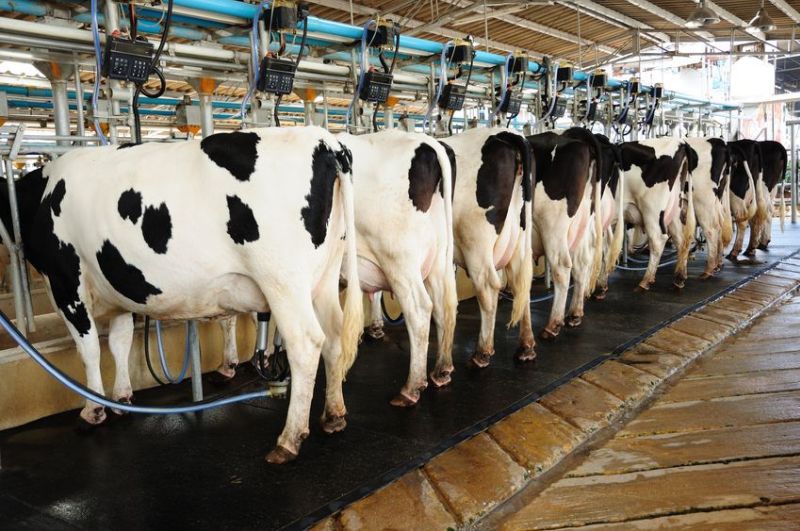
A new report aimed at identifying a strategy for the UK dairy industry post-Brexit has concluded the future is bright for British dairy farmers.
However, the report said long-standing issues surrounding productivity, marketing, the management of volatility and use of technology must be addressed.
The report was presented at the Royal Association of British Dairy Farmers' (RABDF) policy and business conference in London on Wednesday (18 October) by report author Mike Houghton, a partner with Andersons.
At the conference, Mr Houghton argued that while prospects for lowland farms retaining subsidy look slim unless clear public benefit is being delivered, this isn’t necessarily a bad thing.
“Forty years of income support appears to have done little to improve productivity and efficiency in the dairy sector, and so a change to the support system should not automatically be seen as a negative,” he explained.
“But there are some stumbling blocks – how we manage volatility of price for one. Risk management tools are an obvious solution, particularly for heavily invested businesses which are viable at 26-28p per litre but would not survive for long at sub-20p.”
'Improved management'
Mr Houghton said that some processors and independents are developing such tools, but banks and Government might also assist in this area.
“Much of the variation in price could also be ironed out through better communication, use of technology, and improved management of supply and demand,” he added.
“A quicker reaction to oversupply situations is in everyone’s interests; at present the industry appears to respond to reducing milk prices by producing more milk, at least in the short term.
“At farmgate level, this might be take the form of better A and B pricing models. At a global level it could mean setting up an ‘OMEC’ – the milk producing equivalent of OPEC – which manages fluctuations in price by balancing supply and demand.”
Dairy monitor farms
The report explains that many dairy farmers would benefit from a wider network of dairy monitor farms to help them improve their understanding of production economics.
“For example, I estimate that achieving an average yield from forage of 3,000 litres per cow would save the industry over £60 million each year,” Mr Houghton explained.
“Marketing is also an important consideration. We have an extremely large domestic population on our doorstep with a range of chronic health problems that good nutrition and a healthy lifestyle can help to address.
“Dairy can be part of that solution, marketing on the back of what is, globally, a very good standard of animal welfare and food quality.”
The Trehane Trust, a dairy education charity, has welcomed the report. It said dairy farmers must view Brexit for the opportunities.
Domestic Agricultural Policy
The National Farmers' Union (NFU) has also released a new Brexit document. It outlines what it would like the government to adopt as part of a new domestic agricultural policy.
The document aims to ensure UK farming is profitable and competitive in the future as the UK leaves the EU.
The paper, entitled 'Delivering a Bold and Ambitious Future for Farming' sets out opportunities for a British agricultural policy.
It builds on the key themes the NFU sees as being integral to an agricultural policy; volatility, productivity and the environment.
NFU President Meurig Raymond said it’s "what farming and Britain needs" and urged the Government to adopt the measures to help make a success of Brexit for the nation.
“For decades, UK farming has been subject to policies set at a pan-European level, implementing successive CAP reforms driven from the European stage”, said Mr Raymond.
